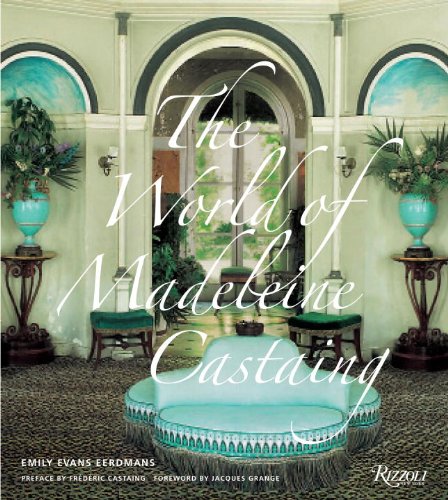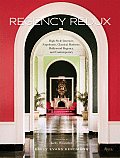 We have all been captivated by the timeless work of architect Gil Schafer. (How do I know this? Schafer was the top search term that brought readers to EEE over the past year.) Many inches all over the blogosphere have been dedicated to his NYC townhouse flat and his upstate country house, both of which are graceful expressions of Classical design (and feature the snappy decoration of Miles Redd).
We have all been captivated by the timeless work of architect Gil Schafer. (How do I know this? Schafer was the top search term that brought readers to EEE over the past year.) Many inches all over the blogosphere have been dedicated to his NYC townhouse flat and his upstate country house, both of which are graceful expressions of Classical design (and feature the snappy decoration of Miles Redd).
Schafer's NYC triple parlor flat
The tremendous level of interest in his work makes it clear that Classical architecture is alive and well.As the icing on the EEE birthday cake, Gil was gracious enough to answer some questions, many of them purloined from Proust...

What is your idea of perfect happiness?
Sleeping late
What is your greatest extravagance?
A house in the country What is your current state of mind?
Freaked out by the economy
Freaked out by the economy
Which words or phrases do you most overuse?
“Hideous” and “Chic”
To be able to watercolor and to play the piano
What do you consider your greatest achievement?
Surviving childhoodWhat do you consider your greatest achievement?

Where would you most like to live?
Right where I am!
What is your most treasured possession?
What is your most treasured possession?
Perfectionist
What do you most value in your friends?
What do you most value in your friends?
Their patience with me
It’s a timeless language that works in any century. And because it is a “language” more than a style, and a very flexible one, it allows you to use it to solve all sorts of design problems, from whatever century you find yourself in. All photos courtesy http://www.gpschafer.com/, except top: Phil Mansfield for the New York Times; and #8: Spencer Weiner for the Los Angeles Times
Which architect past or present has most influenced you? There are several: Lutyens, David Adler, Charles Platt, and George Washington Smith are some from the past. And I learned a great deal from Mark Ferguson for whom I worked for nearly 10 years. When did you first know you wanted to be an architect?
Early childhood.
What is your favorite historical house? Hard to limit to one: Tudor Place in Georgetown, Mount Vernon, Boscobel in Garrison, the Wheeler House by Adler, Greywalls by Lutyens; Val Verde in Montecito Your country house looks like it could have been built 200 years ago. What were ways you adapted the house for the comforts of today?
Central heating and AC; a good kitchen with the necessary modern appliances; French doors that are slightly larger than they would have been in the 1840’s to make it more comfortable to get in and out of the house; great, albeit simple, bathrooms. Otherwise it’s pretty much like an old house.
What relevance does Classical design have in the 21st century?Early childhood.
What is your favorite historical house? Hard to limit to one: Tudor Place in Georgetown, Mount Vernon, Boscobel in Garrison, the Wheeler House by Adler, Greywalls by Lutyens; Val Verde in Montecito Your country house looks like it could have been built 200 years ago. What were ways you adapted the house for the comforts of today?
Central heating and AC; a good kitchen with the necessary modern appliances; French doors that are slightly larger than they would have been in the 1840’s to make it more comfortable to get in and out of the house; great, albeit simple, bathrooms. Otherwise it’s pretty much like an old house.
It’s a timeless language that works in any century. And because it is a “language” more than a style, and a very flexible one, it allows you to use it to solve all sorts of design problems, from whatever century you find yourself in. All photos courtesy http://www.gpschafer.com/, except top: Phil Mansfield for the New York Times; and #8: Spencer Weiner for the Los Angeles Times












11 comments:
OK, I'm going to fawn over Gil. I think he's genius! If only I knew a tenth of what he does. And, he's so nice too. No surprise he's your top search. (I think surviving high school is my greatest achievement.)
Classical design is a "language" more than a style intrigues. However, I fear, I may need a Schafer book to translate this!
My other thought how wonderful would it be for all of us design groupies to be able to watch a series on a Time Traveling Architect!
oh that's the house for me. what a great post. what a great architect.
Great interview! Gil is genius...thank you Emily.
I think what I like most about this interview is that it revels in the great American homes of the past for the most part- All his references are in that vein except for one. A nice change-when there is so much touted about Europe. I also like the quote"It’s a timeless language that works in any century. And because it is a “language” more than a style, and a very flexible one, it allows you to use it to solve all sorts of design problems, from whatever century you find yourself in." It harkens back to each generation will bring its own interpretation and ideas but what should remain and survive is the bones of any worthwhile design-interior or exterior. I wonder if GS is familiar with any Thomas Day woodwork and houses in NC-especially since his resource for the floors in his home came from NC? How does he feel about the loss of many houses that could be redeemed and are being lost to time, neglect or assumed progress? Gaye
Hello,
I agree with you. When I saw his apartment I didn't know what to think, never saw such perfection. He's new to me, but I know i will not get disappointed with what he do.
David
Nice Post. I am a HUGE fan of Gil and think all his work is, simply, perfect.
Love his work!
Just curious- I have three books on David Adler and not one of them seems to contain an image of, or any reference to, the Weaver house.
Does it have another name?
Any images to share?
Thanks.
Anonymous 7:55 - I hit my Adler books too only to be disappointed by no mention of it. We'll get to the bottom of this. It is possible it was never published - many of the Lake Forest/Chicago old guard abhor publicity.... but lets see what we can dig up....
He is one of the greats, I believe.
Reggie
Emily,
Your posts are wonderful tutorials for the decoratively challenged (would that make one a philistine?)
I can spend more time than I have studying the decor, rereading your insights and walking away far more knowledgeable than I thought possible.
I loved this particular post since it gave me pause to breathe. Simple and elegant. Few words, exquisite decor, incisive and thoughtful commentary and the introduction (to me, at least) of an architect I am anxious to know better.
Thank you.
Post a Comment